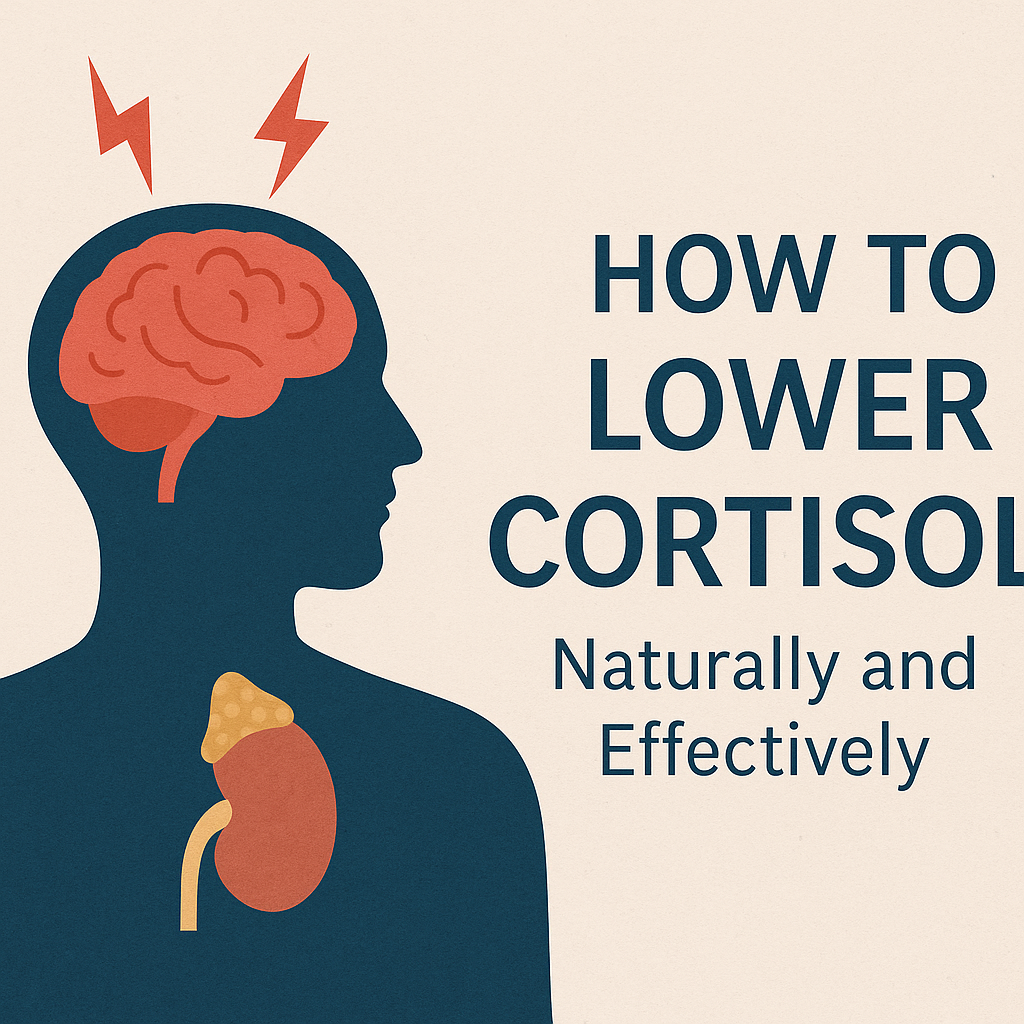
Cortisol—the body’s primary stress hormone—is trending across wellness spaces, social media, and supplement shelves. But why has this hormone suddenly become such a hot topic? More importantly, do the supplements aimed at “balancing” it really work? In this blog, we’ll explore what cortisol does, why too much of it can be problematic, and how to lower cortisol effectively using proven, natural methods.
What Is Cortisol and Why Is Everyone Talking About It?
Cortisol is a steroid hormone produced by the adrenal glands. It plays a vital role in various body functions, including metabolism, inflammation control, blood pressure regulation, and the sleep-wake cycle. Most notably, it’s known as the “stress hormone” because it spikes in response to stress—physical, emotional, or environmental.
Under normal conditions, cortisol levels rise in the morning to help you wake up and gradually fall throughout the day. But when stress becomes chronic—whether due to work, poor sleep, diet, or emotional triggers—cortisol can stay elevated. This is when it becomes a problem.
High cortisol levels over time can lead to:
Weight gain, especially around the abdomen
Anxiety and depression
Sleep disturbances
Fatigue
High blood pressure
Blood sugar imbalances
Weakened immunity
With such a broad impact, it’s no wonder people are searching for how to lower cortisol as a path to better health and mental balance.
The Rise of Cortisol-Targeted Supplements
As awareness around cortisol grows, so does the market for supplements claiming to “lower,” “block,” or “balance” it. These include:
Adaptogens like ashwagandha, rhodiola, and holy basil
Magnesium (especially glycinate and citrate forms)
Phosphatidylserine
Omega-3 fatty acids
B vitamins
Melatonin
While some of these supplements are supported by early studies, they’re not magic pills. For example:
Ashwagandha has shown promise in reducing cortisol in stressed adults, particularly at doses of 300–600 mg/day over 8+ weeks.
Magnesium can support relaxation and sleep, indirectly lowering cortisol.
Phosphatidylserine may help blunt exercise-induced cortisol spikes.
However, results vary widely between individuals. Supplements may help—but only if other lifestyle factors are also addressed. For sustainable results, it’s essential to understand how to lower cortisol through everyday habits, not just capsules.
How to Lower Cortisol Naturally: 10 Proven Methods
If you want to manage stress and rebalance your hormones, here are 10 research-backed strategies for lowering cortisol levels naturally.
- Prioritize Quality Sleep
Sleep is one of the most effective regulators of cortisol. Poor sleep or erratic sleep patterns disrupt your natural cortisol rhythm, keeping levels higher than they should be.
Tips:
Aim for 7–9 hours per night
Stick to a consistent sleep schedule
Create a dark, cool, screen-free sleep environment
Mastering sleep is foundational in learning how to lower cortisol long-term.
- Cut Back on Stimulants
Caffeine and energy drinks elevate cortisol, especially in large amounts or when consumed on an empty stomach.
What to do:
Limit caffeine to 1–2 cups of coffee per day
Avoid caffeine after 2 p.m.
Swap in herbal teas like chamomile or lemon balm
- Eat Balanced, Whole-Food Meals
Skipping meals, high sugar intake, and extreme dieting can all spike cortisol. Stabilize your blood sugar with consistent, nourishing meals.
Cortisol-friendly foods include:
Leafy greens and colorful veggies
Whole grains (quinoa, oats)
Lean proteins and healthy fats (salmon, avocado, nuts)
Fermented foods like yogurt, kefir, or kimchi (supporting gut-brain health)
Knowing how to lower cortisol through nutrition is one of the most actionable strategies.
- Move Your Body—But Don’t Overdo It
Exercise can both raise and lower cortisol. While high-intensity workouts cause short-term cortisol spikes, moderate physical activity helps reduce overall stress.
Best practices:
Walk daily, especially in nature
Try yoga, Pilates, or tai chi
Do strength training 2–3 times per week
Avoid overtraining, which can elevate cortisol long-term
- Practice Deep Breathing or Meditation
Mindfulness practices are some of the most reliable tools for lowering cortisol. Even a few minutes a day can make a big difference.
Try this:
Box breathing (inhale 4, hold 4, exhale 4, hold 4)
Guided meditations (via apps like Calm or Insight Timer)
Progressive muscle relaxation
Learning how to lower cortisol through stress-reduction techniques often has the fastest impact.
- Build Healthy Social Connections
Strong relationships buffer the effects of stress and lower cortisol. Loneliness, on the other hand, can elevate it.
Nurture your network:
Spend time with family or close friends
Engage in group activities or clubs
Talk to a therapist or coach if you need support
- Reduce Exposure to Chronic Stressors
While you can’t eliminate all stress, you can manage how you respond and limit avoidable stressors.
Examples:
Set boundaries at work
Say “no” more often
Limit negative news or social media
Take breaks during the day to reset
- Laugh More Often
Yes, laughter lowers cortisol! Studies have found that humor and joy help regulate stress hormones and increase endorphins.
Easy ideas:
Watch your favorite comedy show
Spend time with funny friends
Look up funny videos during breaks
- Spend Time Outdoors
Sunlight and fresh air help reset your circadian rhythm, reduce anxiety, and lower cortisol.
Nature’s benefits:
Improves mood
Encourages physical movement
Promotes better sleep
- Try Adaptogens Mindfully
If you’ve optimized lifestyle factors, you can consider supplementing with adaptogens. Start with small doses, monitor your response, and choose brands that are third-party tested.
Adaptogens aren’t a replacement for lifestyle change—but they may offer a helpful boost.
The Bottom Line: Cortisol Is Manageable
- Cortisol is not your enemy—it’s an essential hormone that becomes problematic only when out of balance. By focusing on lifestyle changes, reducing daily stress, and supporting your body with rest and proper nutrition, you can regain control.
- If you’re looking to understand how to lower cortisol, remember: sustainable change comes from simple, consistent habits—not quick fixes..

